Sir Sean Connery has died at the age of 90.

31 October 2020
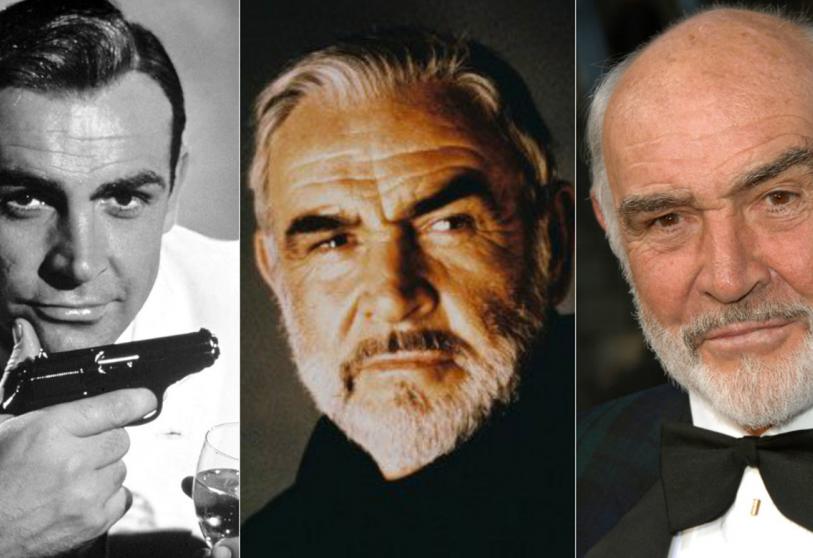
The Scottish actor was best known for his portrayal of James Bond, being the first to bring the role to the big screen and appearing in seven of the spy thrillers.
Sir Sean died peacefully in his sleep in the Bahamas, having been «unwell for some time», his son said.
His acting career spanned seven decades and he won an Oscar in 1988 for his role in The Untouchables.
Sir Sean’s other films included The Hunt for Red October, Highlander, Indiana Jones and the Last Crusade and The Rock.
Obituary: Sir Sean Connery
Sir Sean Connery’s career in pictures
Jason Connery said his father «had many of his family, who could be in the Bahamas, around him» when he died overnight in Nassau. Much of the Bond film Thunderball had been filmed there.
He said: «We are all working at understanding this huge event as it only happened so recently, even though my dad has been unwell for some time.
«A sad day for all who knew and loved my dad and a sad loss for all people around the world who enjoyed the wonderful gift he had as an actor.»
His publicist Nancy Seltzer said: «There will be a private ceremony followed by a memorial yet to be planned once the virus has ended.»
He leaves his wife Micheline and sons Jason and Stephane.

Daniel Craig, the current James Bond, said Sir Sean was «one of the true greats of cinema».
«Sir Sean Connery will be remembered as Bond and so much more,» he said.
«He defined an era and a style. The wit and charm he portrayed on screen could be measured in megawatts; he helped create the modern blockbuster.
«He will continue to influence actors and film-makers alike for years to come. My thoughts are with his family and loved ones.»
In reference to Sir Sean’s love of golf, he added: «Wherever he is, I hope there is a golf course.»
Dame Shirley Bassey, who sang the themes to three Bond films including Goldfinger, paid tribute saying: «I’m incredibly saddened to hear of Sean’s passing.
«My thoughts are with his family. He was a wonderful person, a true gentleman and we will be forever connected by Bond.»

Sir Sean, from Fountainbridge in Edinburgh, had his first major film appearance in 1957 British gangster film No Road Back.
He first played James Bond in Dr No in 1962 and went on to appear in five other official films – and the unofficial Never Say Never Again in 1983.
He was largely regarded as being the best actor to have played 007 in the long-running franchise, often being named as such in polls.

A 20th Century movie icon
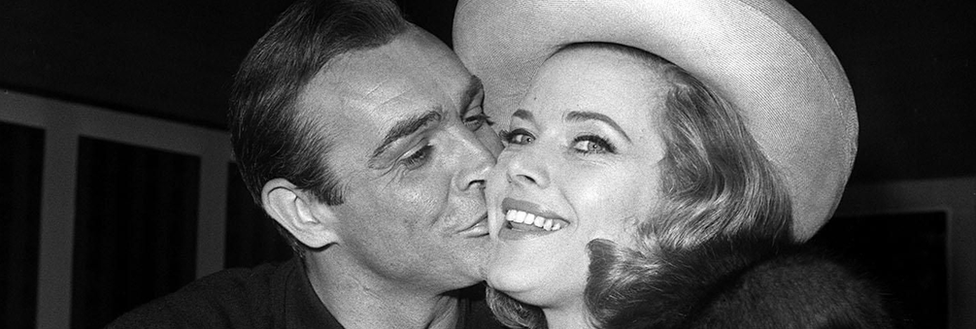
Connery made the character of James Bond his own, blending ruthlessness with sardonic wit. Many critics didn’t like it and some of the reviews were scathing. But the public did not agree.
The action scenes, sex and exotic locations were a winning formula.
In truth, his Bond is now a museum piece; the portrayal of women impossibly dated. The action scenes are still thrilling, but the sex too often bordered on the non-consensual.
Thankfully, its been a while since 007 slapped a woman on the backside and forced a kiss. But Connery’s performance was of its time, enjoyed by millions of both sexes and gave the silver screen a 20th Century icon.

He was knighted by the Queen at Holyrood Palace in 2000. In August, he celebrated his 90th birthday.
Bond producers Michael G Wilson and Barbara Broccoli said they were «devastated by the news» of his death.
They said: «He was and shall always be remembered as the original James Bond whose indelible entrance into cinema history began when he announced those unforgettable words ‘the name’s Bond… James Bond’.
«He revolutionised the world with his gritty and witty portrayal of the sexy and charismatic secret agent. He is undoubtedly largely responsible for the success of the film series and we shall be forever grateful to him.»
Star Wars director George Lucas, who also created the Indiana Jones character, said Sir Sean «left an indelible mark in cinematic history».
«He will always hold a special place in my heart as Indy’s dad. With an air of intelligent authority and sly sense of comedic mischief, only someone like Sean Connery could render Indiana Jones immediately into boyish regret or relief through a stern fatherly chiding or rejoiceful hug.
«I’m thankful for having had the good fortune to have known and worked with him. My thoughts are with his family.»

Just the seven as 007 – Connery’s Bond movies
- Dr No (1962)
- From Russia with Love (1963)
- Goldfinger (1964)
- Thunderball (1965)
- You Only Live Twice (1967)
- Diamonds are Forever (1971)
- Never Say Never Again (1983)

Sir Sean was a long-time supporter of Scottish independence, saying in interviews in the run-up to the 2014 referendum that he might return from his Bahamas home to live in Scotland if it voted to break away from the rest of the UK.
Scotland’s First Minister Nicola Sturgeon said: «I was heartbroken to learn this morning of the passing of Sir Sean Connery. Our nation today mourns one of her best loved sons.
«Sean was born into a working class Edinburgh family and through talent and sheer hard work, became an international film icon and one of the world’s most accomplished actors. Sean will be remembered best as James Bond – the classic 007 – but his roles were many and varied.
«He was a global legend but, first and foremost, a patriotic and proud Scot – his towering presence at the opening of the Scottish Parliament in 1999 showed his love for the country of his birth. Sean was a lifelong advocate of an independent Scotland and those of us who share that belief owe him a great debt of gratitude.»

Alex Salmond, former first minister of Scotland, who was close friends with Sir Sean, described him as «the world’s greatest Scot, the last of the real Hollywood stars, the definitive Bond».
He said: «Sean Connery was all of these things but much more. He was also a staunch patriot, a deep thinker and outstanding human being.»
He added: «‘Scotland Forever’ wasn’t just tattooed on his forearm but was imprinted on his soul.»
OBITUARY: Sir Sean Connery
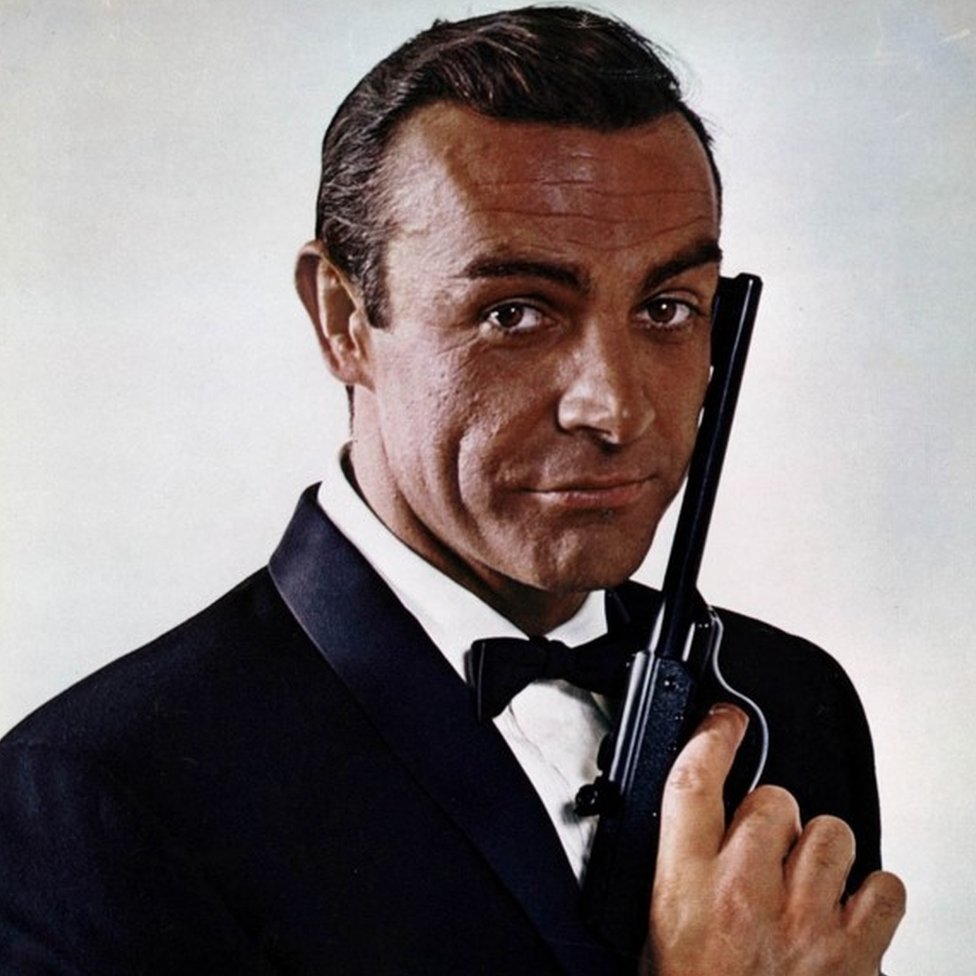
For many, Sean Connery was the definitive James Bond. Suave and cold-hearted, his 007 was every inch the Cold War dinosaur of the books.
He strode across screen, licensed to kill. He moved like a panther, hungry and in search of prey. There was no contest. His great rival, Roger Moore, by contrast, simply cocked an eyebrow, smiled and did a quip.
But whereas Ian Fleming’s hero went to Eton, Connery’s own background was noticeably short of fast cars, beautiful women and vodka Martinis – either shaken or stirred.
Humble origins
Thomas Sean Connery was born in the Fountainbridge area of Edinburgh on 25 August 1930, the son of a Catholic factory worker and a Protestant domestic cleaner.
His father’s family had emigrated from Ireland in the 19th Century; his mother traced her line back to Gaelic speakers from the Isle of Skye.
The area had been in decline for years. Young Tommy Connery was brought up in one room of a tenement with a shared toilet and no hot water.
He left school at 13 with no qualifications and delivered milk, polished coffins and laid bricks, before joining the Royal Navy. Three years later, he was invalided out of the service with stomach ulcers. His arms by now had tattoos which proclaimed his passions: «Scotland forever» and «Mum & Dad».
In Edinburgh, he gained a reputation as «hard man» when six gang members tried to steal from his coat. When he stopped them, he was followed. Connery launched a one-man assault which the future Bond won hands down.
He scraped a living any way he could. He drove trucks, worked as a lifeguard and posed as a model at the Edinburgh College of Art. He spent his spare time bodybuilding.
Too beautiful for words
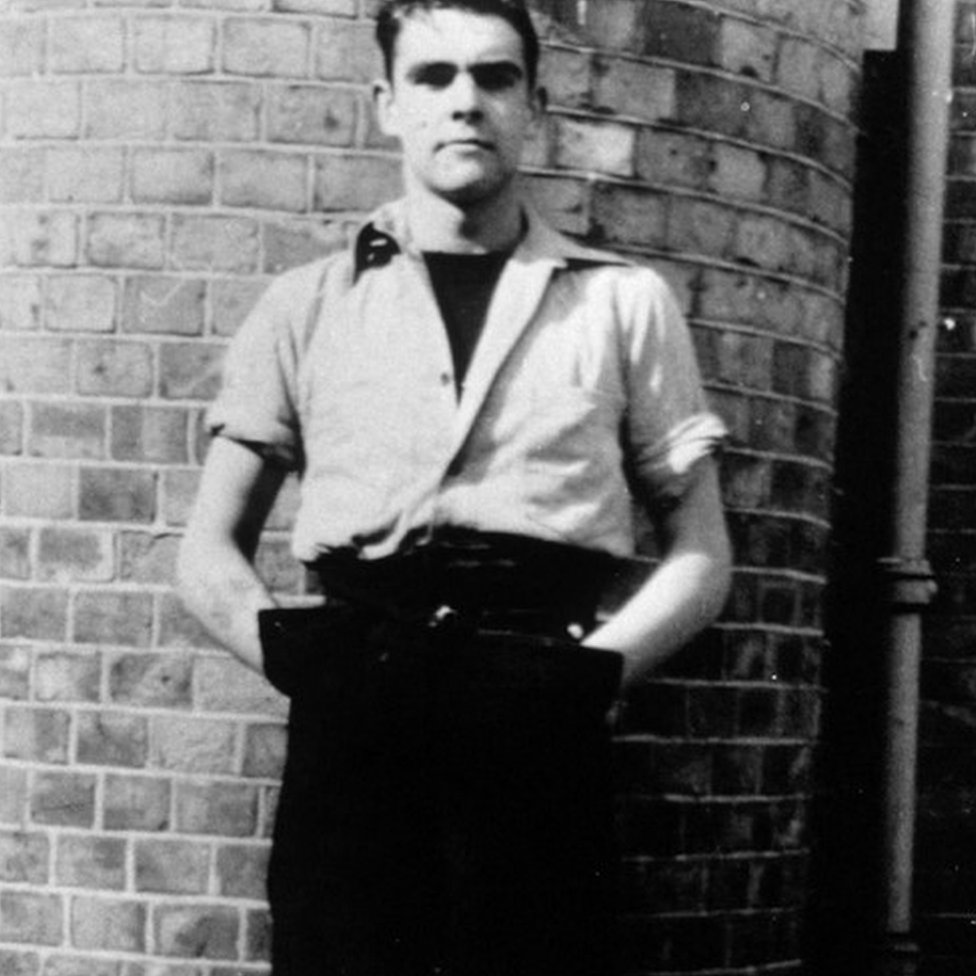
The artist Richard Demarco, who as a student often painted Connery, described him as «too beautiful for words, a virtual Adonis».
A keen footballer, Connery was good enough to attract the attention of Matt Busby, who offered him a £25-a-week contract at Manchester United.
But, bitten by the acting bug when odd-jobbing at a local theatre, he decided a footballer’s career was potentially too short and opted to pursue his luck on the stage. It was, he later said, «one of my more intelligent moves».
In 1953, he was in London competing in the Mr Universe competition. He heard that there were parts going in the chorus of a production of the musical South Pacific. By the following year, he was playing the role of Lieutenant Buzz Adams, made famous on Broadway by Larry Hagman.
American actor Robert Henderson encouraged Connery to educate himself. Henderson lent him works by Ibsen, Shakespeare and Bernard Shaw, and persuaded Connery to take elocution lessons.
Connery made the first of many appearances as a film extra in the 1954 movie Lilacs in the Spring. There were minor roles on television too, including a gangster in an episode of the BBC police drama Dixon of Dock Green.
The ladies will like him….
In 1957, he got his first leading role in Blood Money, a BBC reworking of Requiem for a Heavyweight, in which he portrayed a boxer whose career is in decline.
It had been made famous in America by Hollywood legend Jack Palance. When Palance refused to travel to London, the director’s wife suggested Sean.
«The ladies will like him,» she said.
A year later, he was alongside Lana Turner – proper Tinsel Town royalty – in the film Another Time, Another Place. Her boyfriend, the mobster Johnny Stompanato, reacted badly to rumours of a romance.
He stormed on set and pulled out a gun. Connery grabbed it from his hand and overpowered him, before others stepped in and kicked him off set.
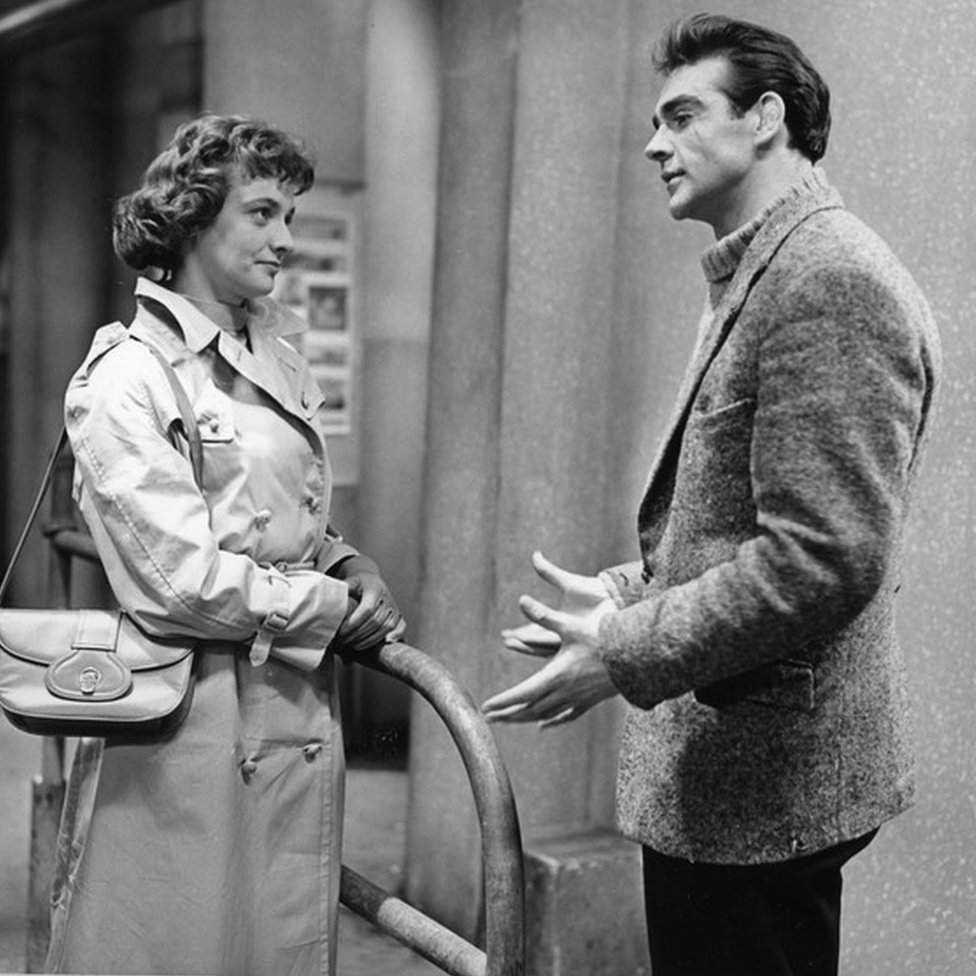
The name’s Bond…
And then came Bond. Producers Cubby Broccoli and Harry Saltzman had acquired the rights to film Ian Fleming’s novels and were looking for an actor to portray 007.
Richard Burton, Cary Grant and Rex Harrison were all considered, even Lord Lucan and the BBC’s Peter Snow.
It was Broccoli’s wife, Dana, who persuaded her husband that Connery had the magnetism and sexual chemistry for the part.
That view was not originally shared by Bond’s creator, Ian Fleming. «I’m looking for Commander Bond and not an overgrown stuntman,» he insisted.
But Broccoli was right, and Fleming was wrong. The author quickly changed his mind when he saw him on screen. He even wrote a half-Scottish history for the character in some of his later works.
A director friend, Terence Young, took Connery under his wing, taking him to expensive restaurants and casinos; teaching him how to carry himself, so the slightly gauche Scot would pass as a suave and sophisticated secret agent.
Connery made the character his own, blending ruthlessness with sardonic wit. Many critics didn’t like it and some of the reviews were scathing. But the public did not agree.
The action scenes, sex and exotic locations were a winning formula. The first film, Dr No, made a pile of money at the box office. Even abroad it was hugely successful; with President Kennedy requesting a private screening at the White House.
More outings swiftly followed – From Russia with Love (1963), Goldfinger (1964), Thunderball (1965) and You Only Live Twice (1967).
It was exhausting and occasionally dangerous. At one point, he was thrown into a pool full of sharks with only a flexi-glass screen for protection. When one of the creatures got through, Connery beat the hastiest of retreats.
There was other work, including Alfred Hitchcock’s Marnie, and The Hill, a drama about a wartime British Army prison in North Africa.
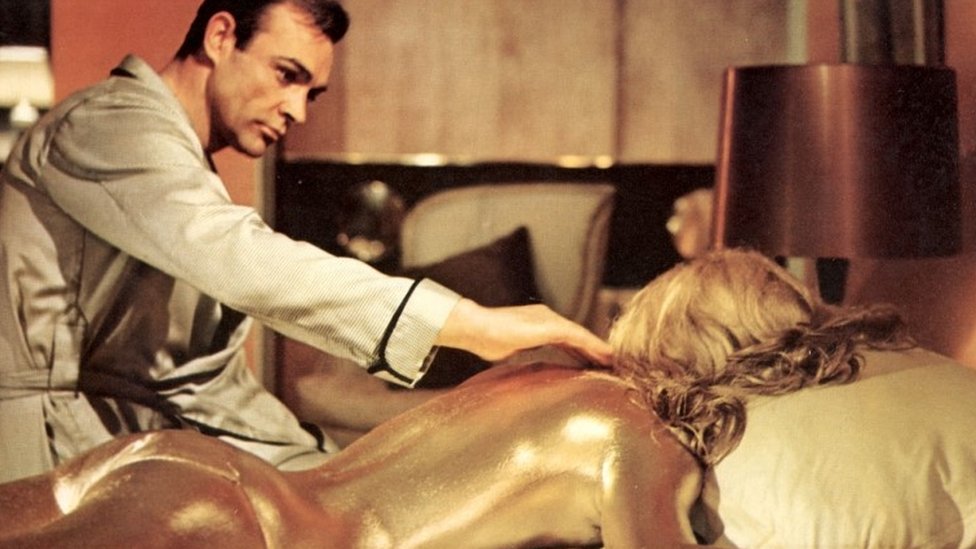
But by the time You Only Live Twice was completed, Connery was tiring of Bond and feared being typecast.
He turned down On Her Majesty’s Secret Service, with the role given to Australian actor George Lazenby, whose career never recovered.
Saltzman and Broccoli lured Connery back for Diamonds Are Forever in 1971, meeting the actor’s demand for a then record $1.25m fee. Connery used it to set up the Scottish International Education Trust, supporting the careers of up-and-coming Scottish artists.
The film had mixed reviews, with some critics complaining the film relied too much on camp humour, a theme that would continue and develop under his successor, Roger Moore.
Connery starred in the Rudyard Kipling tale The Man Who Would Be King alongside his great friend Michael Caine, but most of the next decade was spent in supporting roles, such as in Time Bandits, or as part of an ensemble cast in films like A Bridge Too Far.
Never Say Never
Having lost a lot of money in a Spanish land deal, he accepted a lucrative offer to play Bond again, in Never Say Never Again. This time 007 was an ageing hero; older, wiser and self-deprecating but ultimately still as hard as nails.
The title was suggested by Connery’s wife, who reminded her husband he had vowed «never to play Bond again».
He continued to play other parts, winning a Bafta for his performance as William of Baskerville in Umberto Eco’s The Name of the Rose.

A year later, his performance as a world-weary Irish beat cop, albeit with a definite Scottish accent, in The Untouchables, won him an Oscar for best supporting actor.
In Indiana Jones and the Last Crusade, he played Harrison Ford’s father, despite being only 12 years older. And there was a knowing nod towards James Bond alongside Nicolas Cage in The Rock, where he was a British secret agent kept imprisoned for decades.
There was box office success for The Hunt for Red October, The Russia House and Entrapment; although First Knight and The League of Extraordinary Gentlemen failed to take off.
And he turned down the role of Gandalf in The Lord of the Rings in 2006, declaring himself tired of acting and sick of the «idiots now making films in Hollywood».
Exile
He was briefly considered for the role of the gamekeeper in the 2012 Bond film Skyfall, but the director, Sam Mendes, wisely felt it would be distracting to have a previous 007 appear with Daniel Craig.
Always hating the Hollywood lifestyle, he preferred to play golf at his homes in Spain, Portugal and the Caribbean with his second wife, Micheline Roqubrune, an artist he had met in Morocco.
His previous marriage, to the Australian actress Diane Cilento, had ended in 1975 amid allegations he had been violent towards her and had a string of affairs. They had one son, the actor Jason Connery.
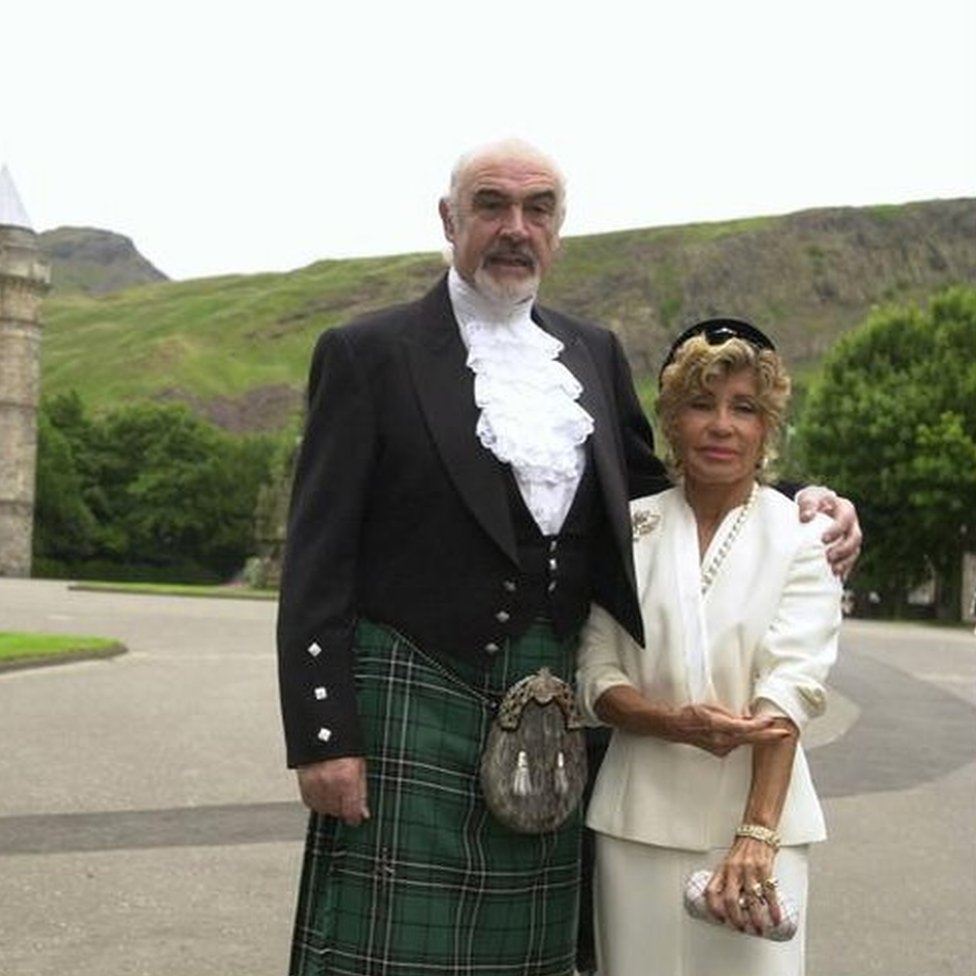
Despite his exile, he retained a full throated passion for Scotland, despite once misguidedly endorsing a Japanese blend of whisky.
He attributed his short fuse and his «moodiness» to his Celtic genes. «My view is that to get anywhere in life you have to be anti-social,» he once said. «Otherwise you’ll end up being devoured.»
A long overdue knighthood, finally awarded in 2000, was reportedly held up by the Labour government because of his support for Scottish independence.
In truth, his Bond is now a museum piece; the portrayal of women impossibly dated. The action scenes are still thrilling, but the sex too often bordered on the non-consensual.
Thankfully, it’s been a while since 007 slapped a woman on the backside and forced a kiss. But Connery’s performance was of its time, enjoyed by millions of both sexes and gave the silver screen a 20th Century icon.
He leaves behind him a body of work that any actor would be proud of and, not least, a vacancy for the title «Greatest Living Scot».

